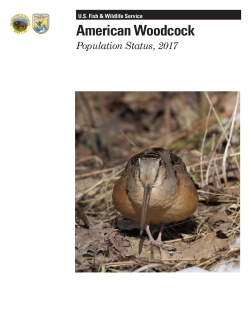
The American woodcock is a popular game bird throughout eastern North America. The management objective of the U.S. Fish and Wildlife Service (FWS) is to increase populations of woodcock to levels consistent with the demands of consumptive and nonconsumptive users (U.S. Fish and Wildlife Service 1990). Reliable annual population estimates, harvest estimates, and information on recruitment and distribution are essential for comprehensive woodcock management. Unfortunately, this information is difficult and often impractical to obtain. Woodcock are difficult to find and count because of their cryptic coloration, small size, and preference for areas with dense vegetation. The Singing-ground Survey (SGS) was developed to provide indices to changes in abundance. The Wing-collection Survey (WCS) provides annual indices of woodcock recruitment. The Harvest Information Program (HIP) utilizes a sampling frame of woodcock hunters to estimate harvest and days spent afield. This report summarizes the results of these surveys and presents an assessment of the population status of woodcock as of early June 2017. The report is intended to assist managers in regulating the sport harvest of woodcock and to draw attention to areas where management actions are needed. Historical woodcock hunting regulations are summarized in Appendix A.
| Attachment | Size |
|---|---|
| AmericanWoodcockStatusReport17.pdf8.12 MB | 8.12 MB |
